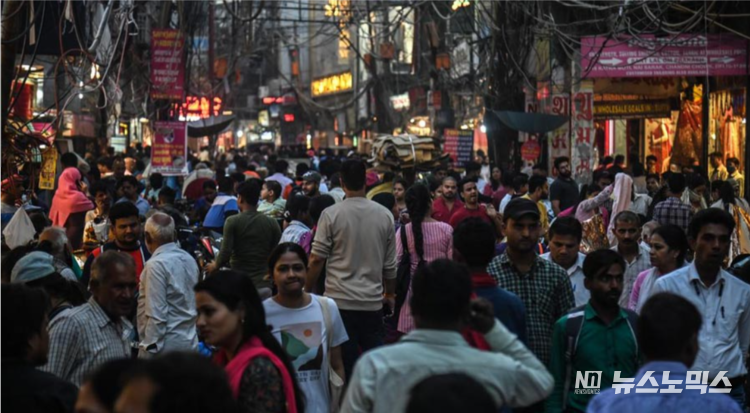
Newsnomics AJAY ANGELINA reporter |
India, the world's most populous country is manifesting strong economic growth catching up with China's economy, but is facing several challenges, including attracting foreign investment and expanding its domestic demand base diagnosed by the New York Times (NYT), an American daily.
NYT analyzed that both green and red lights are turned on for the Indian economy.
The economic boom and stock market boom show India's dynamism.
Last September, the Organization for Economic Co-operation and Development (OECD) predicted that India's economic growth rate will be to be 6.0% this year. Notably, 6.0% is higher than the global economic growth rate (2.7%) as well as the Chinese growth rate (4.6%) forecast.
According to the reports, an India becomes the stock market superpower has grown from $3 trillion (KRW 3,934 trillion) to nearly $4 trillion (KRW 5,245 trillion) in the past year, surpassing the Hong Kong stock market.
The Indian government has set a national goal of catching up with China and becoming an advanced country by 2047.
Economists says 6% growth is not enough rather this requires economic growth of 8 to 9 percent per year.
This is considered a task that Indian Prime Minister Narendra Modi, who is in campaign mode ahead of this spring's general elections, must address to support continued economic growth.
Some says that India should use the conflict between China and the West, including the United States, as an opportunity.
Due to geopolitical tensions, Western companies are having to attract production facilities in China that they plan to move to other countries to India.
For example, Apple of the United States has its main iPhone production plant in China, but is slowly moving some of its facilities out of China.
Currently, about 7% of the world's iPhones are produced in India. JP Morgan Chase, the largest U.S. bank, analyzed that Apple intends to increase its share of Indian production to 25% by 2025.
“Investors want to fill the gap in the supply chain (production in China), a great opportunity for India” said Sriram Viswanathan, an Indian-born partner at U.S. venture capital fund Celesta.
During the COVID-19 pandemic period, an India doubled its spending to improve infrastructure, “but public investment alone is not enough,” pointed out by Auguste Thano Kouame, the director of the World Bank India.
Conclusively, India needs the foreign investment Support, as the foreign direct investment in India averaged $40 billion (KRW 52 trillion) per year over the past few years, but plummeted to $13 billion (KRW 17 trillion) last year.
Last August, the India suddenly banned the import of laptop computers to promote domestic production, but soon withdrew it as the industry fell into confusion.
The NYT pointed out that although Modi government has greatly improved the business environment over the past nine years, bureaucracy is still an obstacle to attracting foreign capital.










